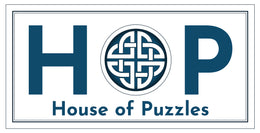Stuck on a puzzle? As satisfying as the end result can be, starting a difficult jigsaw can be daunting. Follow our tips and tricks guide and learn how you can solve jigsaw puzzles easily.
For some people, puzzling can be a great way to keep up your cognitive skills as it has been shown to stimulate both the left and right sides of the brain and help to improve memory. For others, doing a puzzle is a part of their downtime because it can reduce stress and boost self-esteem. Everyone will want to finish a puzzle at different paces, but learning a new method could make your time more enjoyable!
6 Tricks to Completing Puzzles
Whether you take part in puzzle competitions, are the reigning champion of your family or you’re a beginner, our advice can help you improve your skills. Check out our simple six step plan to get started.
How to Start a Jigsaw Puzzle

[Image source: Vardan Papikyan]
1. Sort your puzzle pieces
Before attempting to put the puzzle together, make sure all of your pieces are out of the box and flip them picture side up to avoid any frantic searching later. Ensure that you have enough space to spread the jigsaw out! Once everything is picture perfect, you can then organise your puzzle pieces. Sort them into groups, you can gather sections together by colour and pattern. This will make it easier to find the piece you need later.
In order to solve the puzzle more efficiently, you may also want to arrange the pieces based on their shape or by the tab (the part that inserts into the empty part of the puzzle piece) and blank (the empty part of the puzzle piece where the tab fits into) to see whether they could slot together. Although you could attempt this step later once you have begun to put the frame together.
2. Start with the edges
The classic trick to solve puzzles is by starting with the corners and edges. These pieces are simple to spot because they have a flat side. By beginning with the edge of the jigsaw, you can get a rough idea of how large the picture is in comparison with the artwork sheet and figure out where other pieces will go from there. Once you have a framework, you can move on to the next step!
Developing the Puzzle

[Image source: Alicia Christin Gerald]
3. Take it section by section
Now that you have an outline of your puzzle, start tackling specific areas of the picture. For example, you could begin by finding pieces for the top corner of the image, then the space next to it and so on. This gives you more of a focus point and it is a lot quicker to finish a portion of the puzzle, than if you were to move back and forth between sections.
4. Look for distinct patterns and details
Within your sections, look out for unique details like specific items and small elements of colour. Referring back to the picture slip or box, you can discover distinct characteristics of the section you are working on, this allows you to progress on your puzzle with ease. For example, you may spot that the bottom right corner contains a daffodil that can’t be found anywhere else in the puzzle, you can then build up on this corner based on that detail.
5. Examine it at a different angle
Can’t quite visualise the end result? Try looking at the puzzle from a different perspective. Stand up and look down at the picture as a whole and try to identify some of the gaps. You could also walk around the room to see if there is anything you haven’t spotted yet. For those of you who enjoy puzzling with your loved ones, it may be helpful to get a second pair of eyes that may be able to notice a piece you can’t find.
6. Give your brain a break
Doing puzzles is a great way to unwind, but staring at one image for too long can be overbearing. If you find yourself getting a bit bleary-eyed, give your brain a rest and get up for a while if you can. By giving yourself a break, you are more likely to be able to finish your puzzle instead of stressing over finding a particular piece. This is the perfect excuse to grab a cuppa and a biscuit and come back to your puzzling later.
Tricky Puzzles to Try Out
Now you know how to hack your puzzle game take a look at our top picks to challenge yourself.
Portofino on Reflection 1000 Piece Puzzle
Explore the beautiful Italian landscape of Portofino with this jigsaw illustrated by Roger Turner. With 1000 pieces and an array of colours, Portofino on Reflection is the perfect puzzle to practice your new method.
Kitten Chaos 1000 Piece Puzzle
Madness ensues in this 1000 piece jigsaw puzzle! Kitten Chaos, illustrated by the talented Tracy Hall, is packed with vibrant patterns and mischievous animals for you to spot. Hint: Use our details trick to help you solve this one.
Seasons On The Green - 4 x 500 Piece
Fancy an even bigger challenge? Take on our Seasons On The Green series and go a step further by spotting the differences between each scene. Don’t forget to give your mind a rest between puzzles!
Share Your Puzzling Tips
All done? If you have any more puzzle tricks share them with us on our Instagram @thehouseofpuzzlesltd




